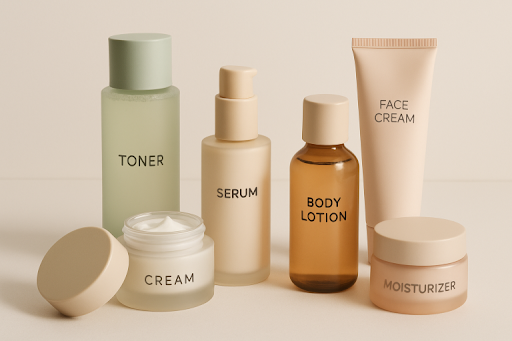Table of Contents
- Why Cosmetic Packaging Design Matters
- Current Aesthetic Trends in Cosmetic Labels
- Sustainable Packaging Solutions and Innovations
- The Role of Personalization in Cosmetics
- Navigating Label Compliance and Regulations
- The Influence of Social Media on Packaging Choices
- Tech-Driven Designs: RFID, QR Codes, and Beyond
- Visual Storytelling and Brand Identity
- Conclusion
Why Cosmetic Packaging Design Matters
The world of cosmetic packaging has never been more dynamic, with design acting as a powerful signal to consumers about quality, safety, and brand personality. The visual and tactile experience created by innovative product labels directly influences purchase decisions and brand loyalty. Whether it’s a new serum, lipstick, or skincare line, packaging often serves as the consumer’s introduction to a brand.
Research from NielsenIQ shows nearly 64% of shoppers try new products based only on packaging. Good design is a silent ambassador, making it vital for brands to communicate value and eco-consciousness beyond function. In a crowded market, packaging differentiates and tells a story. Labels build emotional ties and attract consumers sharing similar values. As trends change quickly and consumers become more savvy, brands need to stay ahead to remain relevant and competitive online and offline. Knowing current trends guides effective packaging that boosts sales and engagement.
Current Aesthetic Trends in Cosmetic Labels
In 2025, cosmetic labels trend toward minimalism, expressive typography, and fresh colors. Bold type with muted, earth tones gives products a premium yet accessible look, while clean, uncluttered layouts add a modern feel. Minimalism signals transparency and authenticity, which are valued by millennials and Gen Z. Sector analysts note that pastel hues, holographic accents, and soft metallics are popular, along with ‘quiet luxury’—a trend of understated elegance featuring subtle textures. Packaging Digest explains how these visuals are shaping consumer expectations, indicating product quality and brand values.

Sustainable Packaging Solutions and Innovations
Eco-consciousness is central to cosmetic packaging in 2024, with brands using recycled plastics, biodegradable films, and responsible paper. Refillable and zero-waste options meet consumer demand for sustainability. Major companies like L’Oréal and Estée Lauder use post-consumer recycled content and promote recycling through returns and refills. Recent trends show regulation and consumer awareness are demanding transparent supply chains and authentic sustainability, rejecting greenwashing and superficial “eco” claims.
The Role of Personalization in Cosmetics
Personalization is gaining importance as consumers want products suited to their needs. Brands use custom labels with names, batch codes, or ingredients for personalized experiences, increasing collectability and emotional connection. Limited-edition and interactive labels like hidden messages or social media challenges also boost engagement. As technology advances, more labels will incorporate personalization, gamification, and participation.
Navigating Label Compliance and Regulations
Packaging is not only about aesthetics—it must also comply with strict regulations. The FDA governs cosmetic product labels in the U.S., while the EU and other regions have their own stringent requirements. Key rules include ingredient listings, weight disclosures, expiration dates, and safety warnings.
Noncompliance can lead to significant business disruption, as evidenced by recent fines that have forced several independent brands to rebrand or recall products. Staying current with regulatory updates and industry best practices is critical for maintaining consumer trust and avoiding costly setbacks.
The Influence of Social Media on Packaging Choices
Social media has transformed beauty packaging, emphasizing Instagrammable designs with vibrant colors, textures, and presentation that promote sharing and viral unboxing. Forbes-backed studies show TikTok trends and viral reveals impact younger audiences, making shareability vital for packaging. Eye-catching labels and eco-friendly materials are crucial to catch attention on social feeds, where quick scrolling can lead to sales, engagement, or brand recognition. For beauty brands, packaging must work both on shelves and online—it’s essential.
Tech-Driven Designs: RFID, QR Codes, and Beyond
Technology plays a growing role in cosmetic packaging. Innovators are embedding RFID tags and QR codes directly onto labels to provide instant product information, usage tutorials, or authenticity checks. These smart labels help brands combat counterfeiting, provide value-added content, and enhance consumer confidence.
By bridging the gap between the physical and digital, tech-enhanced packaging delivers a richer, more interactive user experience—enabling better brand storytelling and post-purchase engagement.
Visual Storytelling and Brand Identity
Cosmetic packaging is more than an exterior; it is a platform for communicating values, heritage, and personality. Labels serve as a “billboard in the hand,” telling micro-stories about ingredients, origin, inclusivity, and intention. A strong visual identity not only garners attention but also fosters brand loyalty and recognition.
Tips for Building a Powerful Visual Story
- Align color palettes and fonts with brand values and audience expectations.
- Incorporate tactile elements, such as embossing or recycled textures, for a memorable feel.
- Leverage creative copy and illustration to communicate product benefits and brand heritage.
- Regularly refresh label designs to stay current with trends, regulatory compliance, and evolving consumer interests.
As 2025 unfolds, the landscape of cosmetic packaging is expected to continue shifting. Brands that anticipate change—fusing style, function, and transparency—will win the hearts and loyalty of modern beauty consumers.
Conclusion
Cosmetic packaging in 2025 is more than a protective shell—it’s a language of trust, beauty, and innovation. From minimalist aesthetics and eco-friendly materials to tech interactivity and personalized touches, design influences consumer perception and loyalty. As regulations tighten and social media amplifies every detail, brands that stay agile and authentic will thrive. Winners view packaging as a strategic investment that combines function, storytelling, sustainability, style, technology, and human connection.



